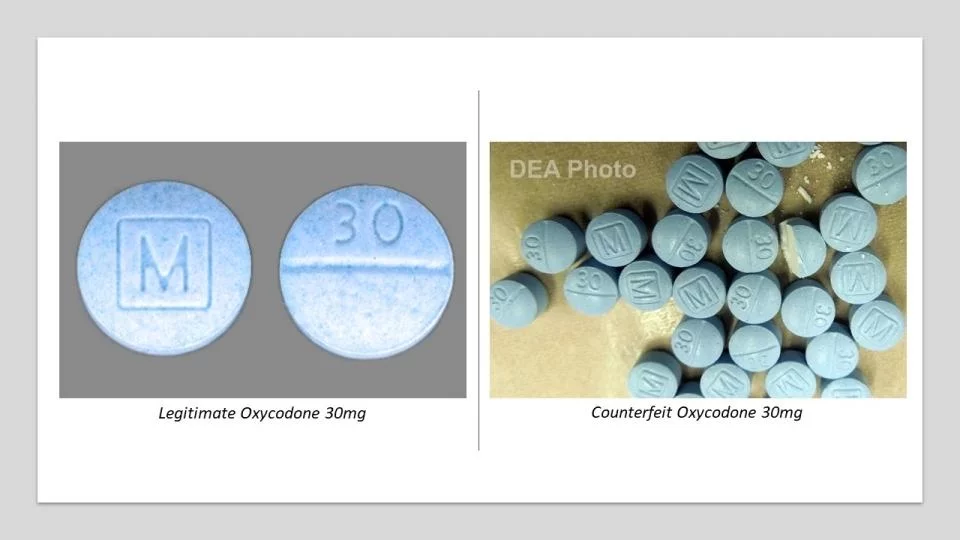In the United States, Fentanyl overdoses are now the leading cause of death for individuals age 10 to 19. Earlier US Center for Disease Control (US CDC) reports from 2019-2021 revealed approximately 90% of overdose deaths involved opioids, and 83.9% involved illicitly manufactured fentanyl. Counterfeit pill evidence was present in 24.5% of overdose deaths. Last year, there were 133 deaths of children younger than 3 who ingested fentanyl accidentally in the United States of America. This flies in the face of a nearly 50% reduction in opiates prescribed by doctors. While doctors prescribed fewer opiates, the overdose deaths doubled.

This is a lethal dose of Fentanyl (0.2mg) on the tip of a pencil. In fact, 1 kg of Fentanyl is enough to kill half a million adults.
Over 100,000 Deaths
According to the United States Center for Disease Control (US CDC), 107,375 people in the United States died of drug overdoses and drug poisonings in the 12-month period ending in January 2022. A staggering 67 percent of these deaths involved synthetic opioids like fentanyl. Some of these deaths were attributed to fentanyl mixed with other illicit drugs like cocaine, methamphetamine and heroin, with many users unaware they were actually taking fentanyl.
Counterfeit Prescription Drugs
The United States Drug Enforcement Administration (US DEA) Laboratory has determined that, of the fentanyl-laced fake prescription pills analyzed in 2022, six out of ten now contain a potentially lethal dose of fentanyl. Decreasing medically supervised prescription opiates has not solved the drug problem, instead it has driven patients away from medical professionals who can recognize drug dependency and provide help.

Above are pictures of authentic oxycodone vs counterfeit oxycodone pills. Even experts have trouble distinguishing the difference. The best way to avoid counterfeit drugs is to obtain them from a legitimate source.
Naloxone Rescue
Naloxone is useful in treating both acute opioid overdose and respiratory or mental depression due to opioids. It is administered intravenously, intramuscularly, or via nasal spray. Depending on the venue, naloxone is available without a prescription as part of harm reduction initiatives in the USA and worldwide.
Naloxone acts rapidly to reverse opioid overdosage. Other adjunctive measures such as rescue breathing and cardiopulmonary resuscitation may be required. Prescribing naloxone should be accompanied by standard education for patients and caregivers that includes preventing, identifying, and responding to an overdose.
Fentanyl is more potent, but has a shorter half-life than morphine. Because of this, the dose of Naloxone needed for Fentanyl overdoses is often higher than that need for Morphine. Double or even triple dosing may be necessary to reverse the effect of fentanyl.
Redosing after reversal is not usually needed after Fentanyl overdoses, but redosing is common for morphine overdoses because the half-life of morphine is longer than the half-life of Naloxone.
For more information check the Aesthetic Society’s website’s Patient Safety Advisory – Fentanyl.
Previous Post Next Post